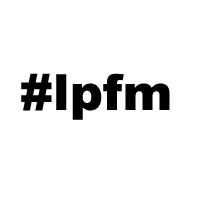 In our last post on the latest broadcast station statistics I noticed that while the number of FM radio stations is steadily increasing, the number of Low Power FM stations has been consistently declining.
In our last post on the latest broadcast station statistics I noticed that while the number of FM radio stations is steadily increasing, the number of Low Power FM stations has been consistently declining.
Take a look at the Federal Communications Commission’s broadcast station spreadsheet (excel download): over 860 LPFMs in March of 2010, down to 838 in December of 2011, down to 809 in December of 2012, down to 788 as of September of this year.
What is happening to these poor little LPFMs? I emailed Peter Doyle of the FCC’s Media Bureau for an explanation.
“It’s funny you mention this,” Doyle responded. ” I was roped into doing a NY/NJ license renewal webinar on Wednesday. There were two practitioners on the panel who were deep into the ‘shock and awe’ shtick, trying to convince broadcasters that their only hope of surviving the renewal process was to pay them BIG BUCKS to steer their renewal applications through treacherous waters. I tried to push back with some statistics showing that the vast majority of renewals are granted without conditions and in a timely way.”
But LPFMs are the exception to this trend, Doyle noted:
“Although not required, we now have a very aggressive staff ‘outreach’ program in place when stations miss the renewal filing date for stations in their state. (This helps some of our most challenged customers while also reducing greatly the back end work in issuing $3K to $7K fines.) Anyway, we have found time and time again that LPFM licensees have simply disappeared, leaving no evidence of their whereabouts or of their former stations. The peak for LPFM licenses (864) is noted in the 12/31/10 station totals – a few months before the start of the 2011-2014 radio renewal cycle. The Wednesday webinar was the first time I commented publicly on this phenomenon. (As noted in your Radio Survivor post today, we’ve also seen a minor drop in AM licenses since 2002 as well and uncovered some ‘abandoned’ AM stations in the current renewal cycle as well. The AM numbers would be more dramatic except that we added hundreds of new AM licenses after 2002 through the 2000 and 2004 AM new station filing windows.)”
Since the radio renewal cycle runs through mid-2014, these LFPM trends could persist for a while. “Of course, I am hopeful that we will able to ADD to the inventory of LPFM licenses beginning next year based on filings in the current window,” Doyle added.
One more thing:
“I used to also highlight the issue of LPFM station “attrition” by citing another statistic – the number of stations for which a construction permit was issues but for which no ‘covering license’ was filed, i.e., the station was not build and the CP [construction permits] expired by its own terms. We issued something like 1400 LPFM CPs – so something like one-third of these potential stations were never constructed. Just for fun, I asked an engineer to calculate the same statistic for the NCE [non-commercial educational] full power stations based on filings in the 2007 window. The ‘fail’ percentage turned out to be almost identical! Obviously, both snap shots straddle the 2008 economic collapse and that might have something to do with what seems to me to be a surprisingly high ‘fail’ rate.”


